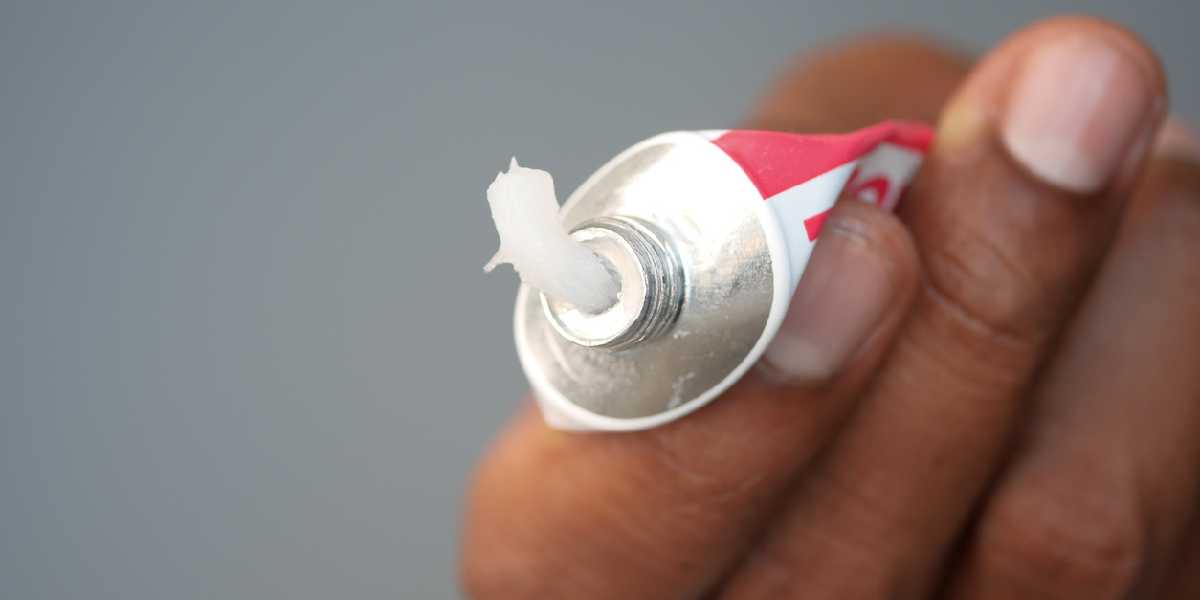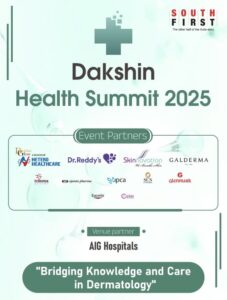People are now experimenting with acids, peels, and even mercury-containing creams being sold under fancy brand names in local shops. These products are banned but still circulate in India, often imported from Pakistan.
Published Nov 15, 2025 | 11:33 AM ⚊ Updated Nov 15, 2025 | 11:33 AM

Synopsis: Mercury-based skin creams, often imported illegally from Pakistan and sold under premium brand names in Indian markets, are causing kidney damage and harming unborn children, experts at South First’s Dakshin Health Summit have warned. Presenting alarming cases of patients suffering burns, scarring, and organ toxicity after using social media-promoted products containing mercury and strong acids, dermatologists at the panel discussion criticised weak regulatory enforcement and the rise of online beauty fads, calling for stricter monitoring and greater public awareness.
Mercury-based fairness creams, often imported from Pakistan and sold under fancy brand names in local shops, are causing serious health complications, including kidney damage and harm to unborn children.
At a panel discussion on ‘Social Media and Skin & Hair Health’ during the second edition of South First’s Dakshin Health Summit, held at the Asian Institute of Gastroenterology (AIG), Hyderabad, on Sunday, 9 November, experts shared disturbing case studies of patients who had fallen victim to social media-driven skincare trends that led them to use highly toxic products freely available in the Indian market.
In India, skincare products containing more than one part per million of mercury are illegal. Yet, products imported from outside the country continue to be sold to unsuspecting customers.

The second edition of the Dakshin Health Summit 2025 was held at the Asian Institute of Gastroenterology in Hyderabad on Sunday, 9 November.
Dr Avinash Pravin, Consultant Dermatologist at Pravin Skin Clinic, Nagercoil, described a case that illustrates the growing crisis.
“I recently saw a patient who had applied something called an ‘onion peeling oil’, promoted by an influencer who claimed she was born dark and became fair after using it,” he said.
“When I checked the ingredients, it turned out to contain 50 percent glycolic acid, available over the counter. The patient came in with severe burns. I recorded his case video with consent because it was shocking – he genuinely believed it would make him fairer overnight.”
Dr Avinash Pravin went on to highlight the broader systemic problem.
“People are now experimenting with acids, peels, and even mercury-containing creams being sold under fancy brand names in local shops. These products are banned but still circulate in India, often imported from Pakistan. Mercury is extremely toxic; prolonged use can lead to kidney damage, and in pregnant women, it can even affect the foetus. So this is not just about cosmetic harm; it’s a public health risk.”
The problem, he said, is not confined to isolated cases.
Dr K Sai Sandeepthi, Dermatologist at Eudermiz Skin, Hair and Laser Clinic, Hyderabad, who moderated the discussion, said such incidents are becoming increasingly common.
“We’re seeing this almost every day in clinics now. Patients come in with bags full of skincare products – the entire consultation table gets covered! And many of them still don’t see any results. So it’s not just their skin barrier that’s damaged – their wallets are too.”
The panel also discussed the growing trend of do-it-yourself skincare procedures promoted on social media.
Dr Sandeepthi shared a particularly painful case:
“This patient tried a DIY hack she found online – she used soda lime to remove her DPNs (dermatosis papulosa nigra). Unfortunately, it caused severe burns and scarring. It’s a painful reminder that what looks simple or harmless online can sometimes cause permanent damage.”
Dr Sangeet Kumar K, Dermatologist at Episkin Hair and Skin Clinic, Hyderabad, highlighted the increasing number of chemical peel mishaps:
“Another important issue is DIY skincare. Many people buy chemical peels online and apply them at home, and we see patients coming in with first- and second-degree burns. DIY is fine for home chores, but not for skincare – your face isn’t a chemistry lab. As dermatologists, we need to use social media to spread awareness about the dangers of such practices.”
Dr Rajetha Damisetty, Senior Dermatologist, Founder–Director of Mohana Skin, Hair & Aesthetic Clinic, and Organising Chairperson of the Dakshin Health Summit, who also chairs the IADVL Anti-Quackery, Legal and Ethics Committee, highlighted a critical regulatory failure enabling the crisis.
“The problem is, in the US or most other countries, you cannot buy isotretinoin without a prescription. But in India, except for Schedule X drugs, almost everything is freely available. That’s what makes it even more dangerous in our context,” she said.
Dr Sivaranjani Santosh, Senior Paediatrician, First Aid Trainer, and Social Activist from Hyderabad, pointed to enforcement failures.
“The government is allowing this to happen. The law is clear – they’re just not enforcing it. That’s the real issue. The problem isn’t the lack of law, it’s the lack of implementation.”
The panel also warned about the spread of dangerous beauty trends through social media.
Dr Jalagam Vijay, Dermatologist and Co-opted Member of the Legal and Anti-Quackery Committee at the Telangana Medical Council, Hyderabad, raised concerns about a recent trend:
“There’s a recent trend that started in Hollywood and is now gaining popularity online – Accutane microdosing. It involves using very low doses of isotretinoin for years together, and it’s being promoted widely on online platforms. Even some major lifestyle and wellness publications are writing about it and making it sound fashionable.”
He cautioned about its risks:
“But isotretinoin, even in low doses, is a very potent and risky drug. If it’s taken by someone in the reproductive age group without proper medical supervision, it can lead to severe pregnancy-related complications and hormonal irregularities. So, celebrities and influencers must take responsibility – they should do proper research and understand the risks before endorsing or talking about such treatments publicly.”
Dr Sivaranjani Santosh contextualised the problem within India’s healthcare access challenges.
“In India, healthcare access is still limited for many people, especially women. They’re obviously concerned about their looks, and if they find something that’s cheap and easy to buy, they’ll go for it,” she said.
“We can’t just blame them – we have to find ways to bridge this gap. Government hospitals rarely have cosmetic dermatology services, and private care is often unaffordable. So the focus also has to be on how we can reach and educate this larger group that’s currently being misled online.”
Dr Rajetha Damisetty acknowledged the complexity of the issue and said:
“We often focus only on our urban setups, where we’re exposed to a small segment of privileged people. But real India is not this.”
<iframe width=”560″ height=”315″ src=”https://www.youtube.com/embed/Wl1Chp0Z008?si=utvH7sQNeyP2nObX” title=”YouTube video player” frameborder=”0″ allow=”accelerometer; autoplay; clipboard-write; encrypted-media; gyroscope; picture-in-picture; web-share” referrerpolicy=”strict-origin-when-cross-origin” allowfullscreen></iframe>
(Edited by Dese Gowda)
